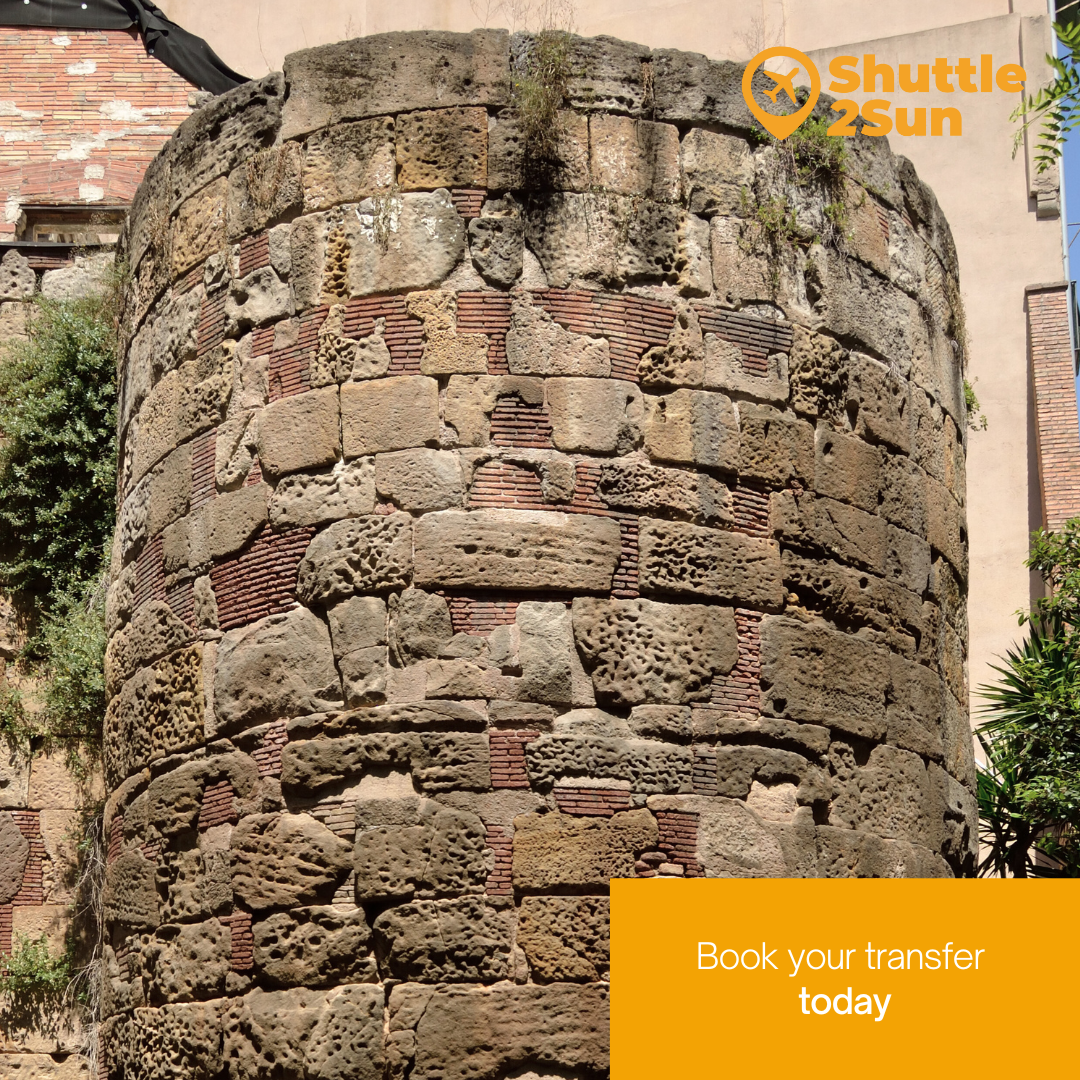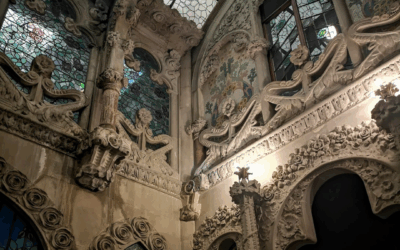Today’s Barcelona, with its bustling atmosphere and modernity, hides beneath its streets the heart of an ancient city: the old Barcino. Founded between 15 and 10 BC under the full name of Colonia Iulia Augusta Faventia Paterna Barcino, this small city was built on Mons Tàber.
With the fall of the Roman Empire and the arrival of the Visigoths, Barcino ceased to exist as such and its inhabitants laid the foundations for medieval Barcelona. Today, visitors can encounter remnants of this ancient past in the Gothic Quarter and its surroundings. Fragments of the ancient defensive wall, remains of the aqueduct and columns recovered from the Temple of Augustus evoke Barcino in the middle of the modern city.
Next, we will discover how modern Barcelona keeps the traces of its Roman origins alive. If you arrive at Barcelona Airport, Barcelona Port, Girona Airport, Reus Airport or Camp de Tarragona AVE train station, we recommend Shuttle2Sun‘s shared transfer services and private transfer services to take you to the heart of Barcelona.
History of Barcino
The Roman colony of Barcino was founded at the end of the Roman Republican era, during the reign of Augustus. Although the area had been inhabited by Iberians (the Layetani), there is no evidence of a previous urban centre on Mons Tàber when the Romans established the city, which was probably intended to house military veterans. Barcino grew slowly and, despite its small size, enjoyed remarkable prosperity thanks to its strategic location by the sea and on trade routes.
Barcino’s heyday was between the 2nd and 3rd centuries AD, coinciding with the height of the Roman Empire. From the 3rd century onwards, the city, like the rest of the Empire, suffered economic and demographic decline.
However, by the 4th century, Barcino had regained its importance: its sturdy walls protected it from invasions and even allowed it to overtake Tarraco. With the fall of Rome, Barcino was occupied by the Visigoths; little by little, it disappeared as an independent city to make way for medieval Barcelona.
Urban layout of the Roman city
The colony of Barcino was designed according to the classic layout of Roman cities. Two main axes crossed it orthogonally: a decumanus maximus, the main street from east to west; and a cardo maximus, from north to south.

The decumanus started at the eastern decumanus gate, located in what is now Plaça Nova, and crossed what are now Carrer del Bisbe, Plaça de Sant Jaume, Carrer de la Ciutat and Carrer Regomir, where the second decumanus gate towards the sea was located. The cardo, perpendicular to it, ran along Carrer de la Llibreteria, crossing Plaça de Sant Jaume and Carrer del Call, continuing along what are now Banys Nous and connecting with Via Laietana in Plaça de l’Àngel.
Barcino also had a central area dedicated to the forum, at the top of Mont Taber, surrounded by public buildings. The main temple and other official buildings were located there.
Remember that you can get to Barcelona with Shuttle2Sun‘s shared transfer services and private transfer services from Barcelona Airport, Barcelona Port, Girona Airport, Reus Airport and Camp de Tarragona AVE train station.

The Roman walls
The defence of Barcino was essential, and the wall is the most spectacular remnant of the Roman city. The first wall was erected when the colony was founded, built with large ashlars in opus quadratum. Around the 3rd century AD, a second outer ring of reinforcement – up to 8 metres wide – was added to the original wall.
Today, remains of that wall can be seen throughout the Gothic Quarter. For example, the southern gate of Barcino can still be seen in Plaça Nova.
Other sections are preserved in the houses at 19 Carrer Avinyó and Carrer de la Palla, finally connecting with the northern gate near Plaça de Sant Felip Neri.
The Roman aqueduct
Water supply was another notable achievement of Barcino. Local wells were not sufficient for a growing colony, so Roman engineers built an aqueduct over 11 km long, which brought water from Montcada.
Today, there are almost no visible remains of this aqueduct: only a 20-metre section with four arches and five pillars remains in the Plaça del Vuit de Març.
Likewise, in the Plaça Nova, next to the gate in the wall, two arches were rebuilt in 1958 to mark the point where the aqueduct entered the city.
The Temple of Augustus
In the heart of the forum of Barcino stood a temple dedicated to Emperor Augustus. In the 1890s, three of the four original large columns were discovered among the ruins of the old CEC (Centre Excursionista de Catalunya) building; shortly afterwards, the fourth was found and displayed in the Plaça del Rei.
The necropolis of Barcino
Next to the boundaries of Barcino ran the Roman burial road, a funerary route that connected the colony with its outer fields. This open-air path is documented in the current Plaça de Vila de Madrid, where the remains of tombs of inhabitants from the 1st to 3rd centuries AD have been discovered.
The Museum of the History of Barcelona (MUHBA)
The remains of Barcino are now housed in the Barcelona History Museum. The MUHBA organises and displays urban archaeology at various locations. Its headquarters are in the Casa Padellàs in the Plaza del Rei, where underground excavations have been carried out, revealing the remains of the forum, Roman villas and other finds.
Dare to discover the Roman city hidden in the streets of Barcelona! With Shuttle2Sun‘s shared transfer services and private transfer services, you can reach Barcelona from Barcelona Airport, Barcelona Port, Girona Airport, Reus Airport and Camp de Tarragona AVE train station.



